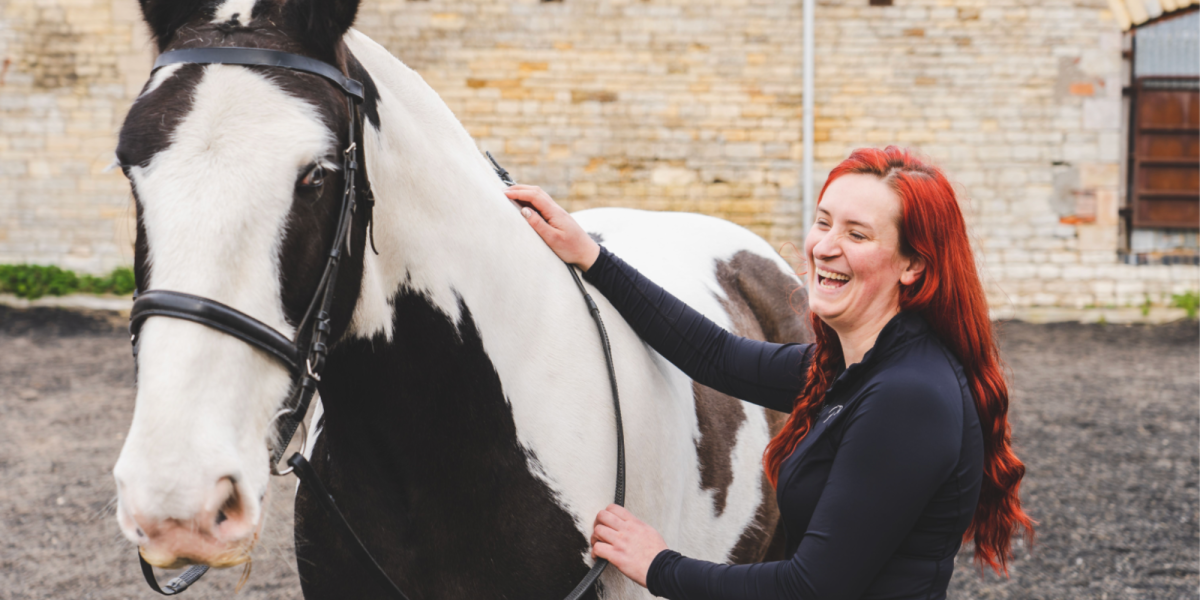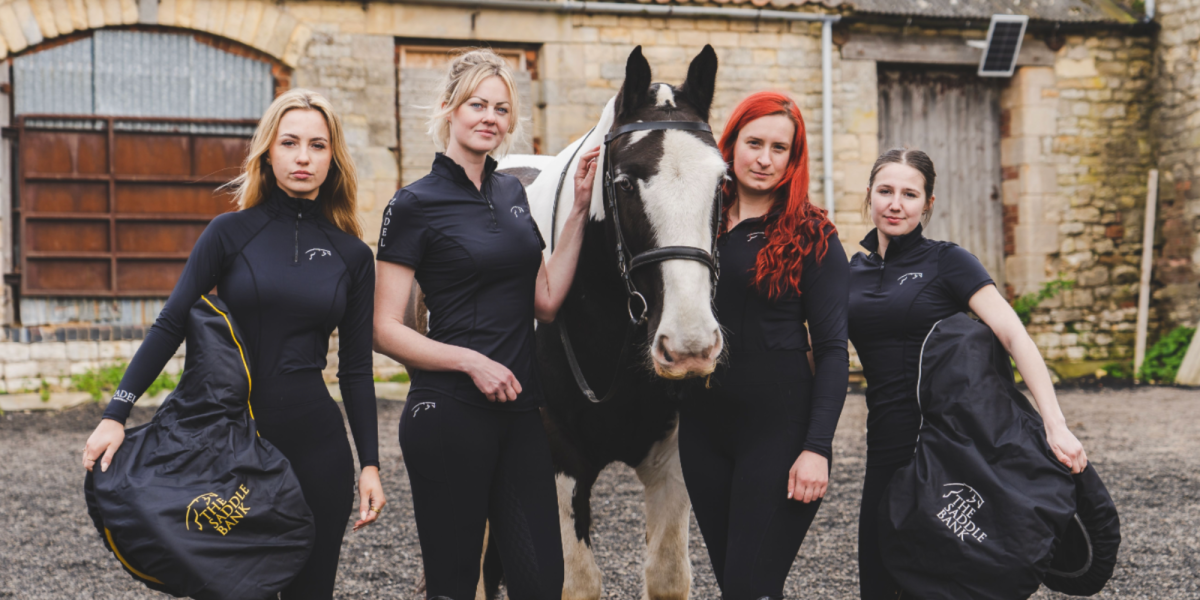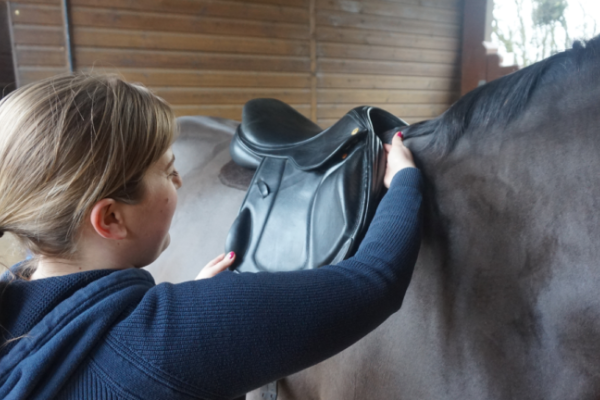What is a Cob Horse?
In this article we will discuss all about the cob horse, and why their popularity is growing across many equestrian disciplines. This blog should help give you an insight into the best type of saddles for you and your horse.
One of the most beloved types of equine companion in the UK, and indeed the world over, is the humble and often underestimated cob.
If you are still a bit confused about which saddle or any saddle related product is best for you why not get in touch with our friendly customer support team. Via phone on 01733 301 488 or email [email protected]. Our lovely team are always happy to help as much as they can and provide you with the information you need to make the best decision for you and your horse.
What defines a Cob Horse?
While there is no strict definition for a cob type horse, any stout, strong, small horse over the height of a pony may be considered a cob. Cobs can be found in pretty much any colour; grey, chestnut, dilute colours such as cremello or palomino, and darker colours such as bay or black, as well as being predominantly white with intermittent patches of colour all over.
Cobs can come in a variety of shapes and sizes but by far the most iconic is the classic look of a traditional cob with black and white (known as piebald) markings all over, plenty of feather, and a thick mane and tail. Cobs usually stand at around 14hh but recommended by the British Show Horse Association to be over 15.2hh to be classed as a ‘maxi’ cob, which is the physically larger subset of the type, with even but not overly exaggerated movement and reasonable athleticism, versatile for most types of ridden activities and driving. Showing societies such as the British Show Horse Association have breed standards which are firmer guidelines around subsets of cobs for showing purposes.

Who are Cobs good for?
An image may spring to mind of a stocky, plucky, hairy skewbald with a sweet expression and plenty of bone, but cobs can be equally steadfast, sporty, and capable, making them a popular mount for those wishing to hack or for an all-round pleasure riding companion, due to their reputation for being reasonably unflappable. Unfortunately, due to their naturally calm and docile nature, cobs are bombarded by the stigma that they are lazy, or stubborn, or perhaps most commonly that they can’t jump. One only needs to talk to any cob owner, and they will be sure to let you know that this simply isn’t true!
Luckily cobs do not have time for the neigh-sayers (pardon the pun!), they’re busy proving all these stereotypes wrong. Their trustworthy nature and ability to carry heavier riders and adults has made them a very popular type of horse for use with riding schools and specifically the Riding for the Disabled Association. However cobs can be found up and down the nation whether showing, hunting, show jumping, partaking in dressage, clinics, carriage driving, vaulting, and even horseback archery!
Different breeds which are classed as cob horses
A cob isn’t necessarily a specific breed, it is a type of horse that exhibits certain characteristics; therefore, many breeds of stocky, short, hardy horse with considerable bone and ‘cob’ characteristics may be thought of as a cob.
Popular breeds one may think of include the ‘Welsh’ cob a.k.a. the Welsh Section D, an ‘Irish’ or ‘Gypsy’ cob (also known as a ‘Gypsy Vanner’ by their breed association in the USA) and a ‘French’ cob, also known as a ‘Cob Normande’. These breeds all show common features and traits of a cob horse. In that they are often larger than a standard pony, shorter and stockier than other breeds of horse, and can turn their hoof to most disciplines. With short legs, and a noble head set upon a broad set of shoulders, cob types will often have an abundance of hair and a hardy nature which makes them ‘easy keepers’ throughout the year. These talented all-rounder horses should have substantial presence, and their level-headedness only adds to their charm.

Finding saddles for cobs
Cobs may need a special consideration when picking a saddle due to common characteristics in these horses which can make them difficult to fit into standard models. Traditional cobs are thought to be originally bred by the Romani people to be strong enough to be able to pull caravans, and as such have developed to be short and stocky with a wide barrel. Many cobs today still display this trait, and appear to have virtually no withers and a broad, flat back.
With this being said, not all cobs will be typically cob-shaped and further still some horses may benefit from cob saddles that are not even cob types, like baroque-style Spanish horses, heavy horses/draft breeds, and some of our native ponies like Dales or Fell ponies that share the similar wide, flat back, and round barrel shape. We have broken down our key considerations when fitting a saddle to a cob below:
Flat Rails
Cobs and cob-shaped horses aren’t simply wider than the average horse, therefore it is not always the case to be able to fit a ‘standard’ adjustable saddle to a wide setting and have it fit the horse, though this sometimes is a good solution. Cob saddles are specifically made to benefit the shape and body type of a cob. For example, you may find that in an average saddle the tree rails are angled, but as mentioned earlier this is not best suited to a cob’s flat back, so shallower or flatter rails are certainly more beneficial here!
Wide gullet and Hoop Trees
When looking at a cob saddle, equestrians may notice that the entire seat and twist of the seat is broad. Therefore evenly-distributing weight over the horses wide back without applying pressure to the horses spine directly. Most cobs can find comfortable options in super wide saddles. So when considering adjustable saddles, those that offer options that include widths up to 4XW will give the best chance of a good fit. For equestrians looking for a fixed tree option, one may come across the term ‘hooped tree’. Which is an extremely popular option for a horse with a flat back and a wide wither profile; hoop trees are designed to have a smooth, even gullet arch, which is broad and low. Perfectly complimenting the natural contour of the cob.
Short back
Though cobs can grow to standard horse sizes as mentioned earlier. With some maxi cobs measuring upwards of 15.2HH, cobs often have a surprisingly short back so owners and riders must be careful in selecting the length of the seat. A professional saddle fitter will help you to take this into consideration. The key task to navigate when dealing with a short-backed cob is to account for appropriate weight distribution. Which is why a specifically-designed cob saddle should be a staple in every cob owners and riders arsenal; the wide panels will take this into account to ensure that riders weight does not bear down onto singular spots. Instead it is evenly dispersed on either side of the horses back with no direct weight onto the spine.
Slim Panels
Slim panels with decent high-quality padding allow for the saddle to sit closer to the horse. Wrapping around a wide frame, rather than some traditional style padding which may not be best suited. Standard flocking in the panels may not have the same ‘wrapping’ effect. Instead they will leave the saddle effectively ‘perched’ on top of the horse. Which will cause the saddle to roll; not only proving difficult to ride in and possibly damaging the saddle. This will do your lovely cob’s back no good at all. Cob saddles do this without compromising on comfort or quality for your horse. The effective design utilises soft flocking to give the most appropriate fit for our round equine friends.
‘Cob Horse’ Girthing options
When lifting the large flap on some cob saddles, one may be perplexed as to why there are so many girth straps; cob saddles often are fitted with five girth straps. An extra fitted either side of the ‘standard’ 2/3 which may look quite alien.
You would be forgiven for initially thinking these extra straps were superfluous. However they are far from unnecessary and could provide the key to solving some of the common issues of saddling a cob. The extra strap nearest to the pommel or the ‘front’ of the saddle is known as the point strap. So-called due to its situation on the point of the tree. The typical larger barrel of a cob type horse may inadvertently cause the saddle to slip forwards. Due to the girth’s natural inclination to want to nestle into the narrowest part of the horse’s belly. Often this is directly behind the elbow.
For horses that suffer from this issue, putting the girth on the point strap can be a good solution. This will prevent the saddle from coming forward and over the shoulder, hindering natural movement for the horse. At the other end of the girth straps, closest to the cantle, you may find the balance strap. The balance strap's main role on the saddle is to stop the saddle from slipping from side to side.
A well-fitted saddle checked by a qualified saddle fitter should show minimal signs of slippage. However when working with horses with a wide, flat back such as a cob, this may not be completely avoidable; when a saddle fitter assesses a horse and finds slight slippage to one side or the other, they may advise the usage of one or both balance straps as a measure to prevent damage to the horse or saddle. By utilising the point and balance straps equestrians may find the saddle to be vastly more secure on the cob. This is due to the wider dispersal of pressure.
Popular Saddle Models for Cobs
Now that we know what to look for in a cob saddle. The next question is, where do we find one?!
Luckily The Saddle Bank has this covered, we have hand-picked out a few of our top choices. Which have been tried and tested on our beloved cob friends:
Available in black or brown, these adjustable saddles go up to 4XW and are suitable for use with the EASY-CHANGE Gullet System WIDE.
The Bates WIDE range is available to suit multiple disciplines. They have a variety of models to suit your budget including their Opulence Leather lines, expertly crafted with ultra-soft leather.
An affordable yet high-quality option for most cob owners. The Wintec Wide range is by far one of the most popular for wider horses. Read what we have to say about them in greater detail by clicking here !
Not only do Kent and Masters make gorgeous, extremely well-made saddles for all disciplines. They have also cleverly-designed a range of saddles specific to cobs! The iconic flat cantle and adjustable knee blocks make this range one of the best on the list, we give you the low down on what makes this saddle so special click here to check out our blog all about it!
Monarch saddles are part of the wider GFS (General Fieldhouse) family. Who have been producing outstanding quality for many years, and the Cob range is absolutely no exception. Available in 4 seat sizes (16.5″, 17″, 17.5″, and 18”) and gullet width from narrow through to 4XW. You will likely find something to fit every cob in this amazing range. For more information, or to find out about arranging a trial, click here.
With possibly the most apt name for a cob saddle ever! “Chunky Monkey” are a UK brand that make saddles best-suited for the chunkier and more rounded horses.
With a mission to achieve ‘exceptional fit for the modern horse and pony’ it’s easy to see why Andrea Hicks Saddles have a reputation for fitting horses that are harder to cater for with other brands, and are becoming increasingly popular due to filling this niche.
To find out more about Adjustable GP Saddles for Cobs click here to read our blog on them!
Learn more about how saddles should fit….
If you are a horse owner or rider and would like to learn more about saddle fitting. As well as how the saddle can impact your horses performance and welfare, click on the image below.













